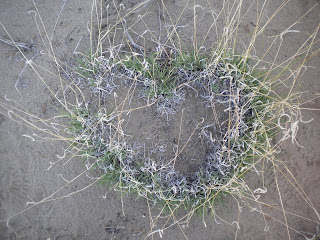I so felt like a country girl, making a corral of all things, at this place.
 |
| Kevin Rockey, of Western Mountain Youth Services, after a long day of corral building |
 |
| I <3 Historic Preservation |

We discussed multiple perspectives of "land owners" of this place: the Luis Maria Baca land grant from 1600s Spain, the treaty of Guadalupe Hidalgo which apparently invalidated the land grant's right to claim (because it was in Spanish?), John Duncan's (the cabin builder) claim for the mining rights (he found some gold nuggets in the nearby hills), his "sale" of nearby plots of land (which didn't really give the buyers the right to ownership), the US Supreme Court decision to award ownership to the San Luis Valley Cattle Company, rather than the people who thought they owned the cabins and land on which they built them. The US Marshalls forcibly evicted those people in the early 1900s by blowing up their cabins. John Duncan's cabin is the only one that remains.
Angie Krall also explained this place's location on the Spanish Trail, from Santa Fe to Los Angeles, and the native peoples who inhabited this place for the past 11,000 years.
Since the place had been in private hands for the last several decades, there are lots of bits of glass, even shoe leather from the cobbler. At one point the town of Duncan may have had 3000 residents, a stage coach line, and maybe even a telegraph link. Now it is a ghost town, with one lovely preserved cabin.
I'm hoping Jonas Landes, the HistoriCorps program manager, will develop summer internships for college students for next summer. Through partnerships with the multiple agencies, HistoriCorps was able to provide meals (organic! local!) and even local BEER to appropriately aged volunteers. We also had a safe place to camp. (note: there was a strange vehicle (white truck, no agency logo) that came on the site between 3:30 and 5 am on Sunday, without its lights on...)
When the cabin is finished, anyone can make a reservation at this fantastic place through Recreation.gov for about $30-60/night and enjoy lovely views like this:
 |
| Great Sand Dunes National Park, from the north |
